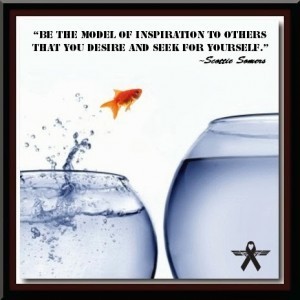Ken Poirot's Blog, page 10
June 16, 2014
Mentor Me: GA=T+E—Dr. Roman Perez-Soler, Leadership, and Management
When I graduated from Cornell University with a B.S. in Microbiology, I moved to Houston, Texas to begin a Ph.D. Program in Cancer Research at my graduate school of choice – University of Texas Health Science Center. The main reason for this is their relationship MD Anderson Cancer Center - I would have the opportunity to work for and do research at arguably the best, if not one of the best, cancer centers in the world.
 I had already researched the professors I was most interested in choosing as a mentor, and Dr. Roman Perez-Soler, M.D. was my first choice. To the credit of the university – the university gave their Ph.D. students a great deal of flexibility. As students, we would choose three laboratory rotations – choosing the three professors we would work with for these laboratory rotations. It was a chance for us to “test drive” the experience – make sure this was the best choice for us, as well as the professor. After all, a Ph.D. can take 4 to 7 years to complete, so you want to make sure you are making the right choice for all parties involved.
I had already researched the professors I was most interested in choosing as a mentor, and Dr. Roman Perez-Soler, M.D. was my first choice. To the credit of the university – the university gave their Ph.D. students a great deal of flexibility. As students, we would choose three laboratory rotations – choosing the three professors we would work with for these laboratory rotations. It was a chance for us to “test drive” the experience – make sure this was the best choice for us, as well as the professor. After all, a Ph.D. can take 4 to 7 years to complete, so you want to make sure you are making the right choice for all parties involved.
I already knew I wanted to work for Dr. Roman Perez-Soler, so I chose a couple other laboratory rotations while I learned more about Dr. Roman Perez-Soler’s work. It was exciting for me – he was on the leading edge of cancer research. In contrast to most cancer treatments at the time, which used chemotherapy, drugs that kill every cell in the body that are dividing quickly (hair, intestinal lining, immunological, and tumor cells – the reason many cancer patients lose their hair, have digestive problems, and are more open to infections), and radiation – Dr. Roman Perez-Soler was working with ways to target specific cancer cells. Specifically, he was working with lung cancer, using inhalation therapy to put the cancer drugs right on the tumor – targeting the cancer cells with very little damage to other cells of the body.
This type of cancer research had real promise, as all the other side effects of chemotherapy (literally making the client sick and opening them up to further possible diseases due to their weakened immune system), could be avoided.
In addition, he was working on packaging drugs in liposomes – fatty acid compounds, similar to the molecules that make up fats, and cell membranes. This would, in essence, allow the drug to be protected from being broken down in the body, allow for less drug to be delivered to the tumor site (less drug means less chance for harmful side effects to the patient from the drug), and also as a way to physically get the drug to the tumor site.
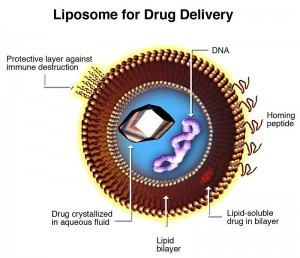 Furthermore, by changing some of the properties of the fatty acids used in the liposome – you could use liposomes to target different organs of the body. Liposomes, by their nature, when injected end up most often concentrated in organs with large amounts of capillary beds (small blood vessels trap the liposomes and concentrate them for targeting those specific organs), for example, like the lungs or the liver (the hepatic portal system having a large amount of capillaries and due to the liver’s role in filtering certain chemicals from the blood stream).
Furthermore, by changing some of the properties of the fatty acids used in the liposome – you could use liposomes to target different organs of the body. Liposomes, by their nature, when injected end up most often concentrated in organs with large amounts of capillary beds (small blood vessels trap the liposomes and concentrate them for targeting those specific organs), for example, like the lungs or the liver (the hepatic portal system having a large amount of capillaries and due to the liver’s role in filtering certain chemicals from the blood stream).
As Dr. Roman Perez-Soler also explained to me, eventually this could also mean designing a certain formulation of liposomes which would release drugs to specific tumor sites based upon applying heat to the tumor site form an external source. For example, if there was a tumor internally in the arm of the patient (or anywhere in the body), you could inject the patient with the drug packaged in liposomes, heat the part of the body containing the tumor using something as familiar as a heating pad, and that specific formulation of liposome would release their packaged drug once they reached the heat source – effectively targeting just the tumor, with very little collateral damage (unlike traditional chemotherapy).
All of this was exciting to me. Most of all – having the chance to study with and learn from such an accomplished doctor and researcher. Dr. Roman Perez-Soler was well published in many scientific journals, had earned many US Patents for new inventions in the field of liposomes and cancer drugs, and he won a great deal of grant money for his research – showing the interest for his research from the scientific community.
At the time I worked for Dr. Roman Perez-Soler, grant money was particularly hard to come by. There were many cancer researchers, even at MD Anderson Cancer Center, who were struggling, writing grants, and some not getting any funding for their research – some very talented researchers. So this said a lot about both Dr. Roman Perez-Soler as well as his research – it was a vote of confidence from the scientific community.
Dr. Roman Perez-Soler – the Most Brilliant Man I Have Ever Known Personally
So I knew the man is brilliant before I stepped into his laboratory and became part of his research team. What I never could have known is how much I would learn from this man with respect to leadership and management. Some of what Dr. Roman Perez-Soler taught me, just by observing him and working with him, were some of the most valuable lessons I would learn in my life about leadership and management.
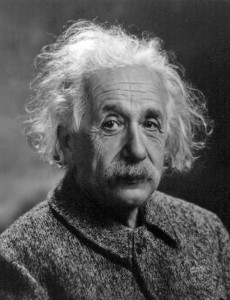 I will never forget the first day we met – at his medical office in the hospital – what first caught my eye was the wall of plaques representing US Patents hanging on his wall.
I will never forget the first day we met – at his medical office in the hospital – what first caught my eye was the wall of plaques representing US Patents hanging on his wall.
As I wrote in Mentor Me:
“Dr, Roman Perez-Soler looked me in the eye one day and said, ‘I know this may be impossible…but why don’t you try this as your project? I believe in you.’
Okay, so he was giving the twenty-one-year-old graduate student a project that ‘may be impossible’? But he believed in me! I worked hard at coming up with a solution. I had a goal: after seeing all the US Patents hanging on Dr. Roman-Perez’s wall, I wanted one for myself.
Dr. Roman-Perez gave me complete flexibility with the project. I could try any solution I felt deserved to be tested, with logical justification, and I could then purchase any compounds I wanted, to create a liposome to package the drug.”
What struck me immediately about Dr. Roman Perez-Soler, above and beyond his obvious brilliance and already illustrious research career, is this man cared very, very deeply about people – patients and the people who worked for him. As he told me, “Ken…I would go crazy if I was only a doctor seeing patients and I did not have the research too. Unfortunately, most of the people who come see me are going to die – for many of them there is nothing I can do for them, but the research gives me an opportunity to ultimately be able to help the people I would never have been able to save.”
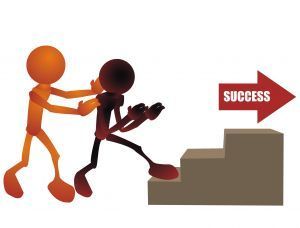 He took time out of his busy schedule – seeing patients full-time, and running his research staff, to work with me one-on-one – a graduate student! This was unusual in itself, as most graduate students work almost exclusively with post doctoral fellows, and other researchers on the team. He took the time to start me off in his laboratory personally – working directly with me. In all respects – he was my mentor.
He took time out of his busy schedule – seeing patients full-time, and running his research staff, to work with me one-on-one – a graduate student! This was unusual in itself, as most graduate students work almost exclusively with post doctoral fellows, and other researchers on the team. He took the time to start me off in his laboratory personally – working directly with me. In all respects – he was my mentor.
Furthermore, he set his expectations with me from day one – he would give me complete flexibility – not only with my project (which was my project – he gave me ownership of the project), but also with my time. As he said, “Ken…I do not care where you are or how you set your schedule each week, just have data for me every Friday – the day we will meet to discuss it.”
He put a great deal of trust in me and I was not going to let him down. Many managers can learn from Dr. Roman Perez-Soler. I have had good managers and I have has some terrible managers (I have taken and learned important lessons from my terrible managers too). What I will say is, and I have found this as a manager myself, if you lift people up, believe in them, empower them to make decisions (with the appropriate level of supervision), set clear expectations, inspect what you expect (have data for me every Friday and we will go over it together) – people will be very loyal and work exceedingly hard for you. How difficult is it to treat people right?
In contrast, if you beat on people, push them down, kick/whip them, and tear them down on a regular basis – you will be miserable, they will be miserable, and they will only work for you as hard as they have to (not want to) in order to prevent further beatings.
I call this “Lift Up Management” versus “Beat Down Management” – I will write a future blog on this to describe some of my less than stellar managers (but the key is, I even learned something from my terrible managers). Dr. Roman Perez-Soler is one of the most humble, sweetest, brilliant, and best mentors I have ever known – as my manager and my direct supervisor.
Not only did I have data for him every Friday, as he asked me to, but I had the flexibility to plan my experiments (design) as well as schedule my time (time management). It was my first important lesson in time management. After all – ownership of the project belonged to me – the progress of my project was a direct reflection of me. There was no one else responsible for the success or failure of the project – it was all on my shoulders (but I was not alone since I had the help from my mentor any time I needed it – he had an “open door policy” and I could come see him anytime I wanted or needed his input).
 The laboratory rooms we used for Dr. Roman Perez-Soler’s research, had five private investigators (researchers at Dr. Roman Perez-Soler’s level), conducting research spanning five laboratory rooms, with approximately twenty employees (of all different levels – graduate students, laboratory technicians, post doctoral fellows, and senior researchers – almost professors) using all the laboratory equipment each day. Some of the graduate students and other laboratory personnel would hang out all day – just socializing most of the time – waiting to use certain equipment so they could run their experiments. Most worked from 8AM or 9AM to 5PM or 6PM.
The laboratory rooms we used for Dr. Roman Perez-Soler’s research, had five private investigators (researchers at Dr. Roman Perez-Soler’s level), conducting research spanning five laboratory rooms, with approximately twenty employees (of all different levels – graduate students, laboratory technicians, post doctoral fellows, and senior researchers – almost professors) using all the laboratory equipment each day. Some of the graduate students and other laboratory personnel would hang out all day – just socializing most of the time – waiting to use certain equipment so they could run their experiments. Most worked from 8AM or 9AM to 5PM or 6PM.
Since Dr. Roman Perez-Solver gave me the flexibility to schedule my time, I could come in after hours – after 5PM or 6PM, use all the equipment in the laboratory without being interrupted and without waiting in line for the equipment. Therefore, I could run multiple experiments simultaneously – using whatever equipment I needed without having to wait for others to finish their experiments with the equipment.
In other words, I could be more efficient than any of the other laboratory researchers and have more than a weeks’ worth of data for Dr. Roman Perez-Soler each Friday. We could meet, discuss the data face-to-face, discuss the design of the current experiments, discuss other compounds I wanted to order along with justification for spending grant money for these purchases, discuss future experiments/designs, and keep our time together as productive as possible each. The relationship worked well and the end result was a US Patent for my research (as documented in a previous blog).
When I had a breakthrough with my research project, six months after my start with Dr. Roman Perez-Soler – due to the flexibility and trust he placed in me – he gave me credit for my research. I cannot tell you how rare it is, on a graduate student level, to be included on the US Patent for a discovery. Yes, without me, there would not have been this breakthrough, but in Science as well as in the corporate world – often, individual accomplishments are not rewarded at the subordinate level. It would not have been outside the norms in research for Dr. Roman Perez-Soler to be solely listed on the US Patent for my research under his supervision. This man taught me another important lesson in leadership, management, and life – give credit where credit is due.
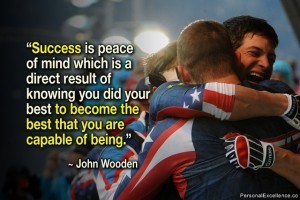 Dr. Roman Perez-Soler gave me partial ownership of the US Patent, as you can see my name is on the patent. Additionally, my contribution and breakthrough for my project would not have been possible without the earlier contributions and breakthrough of Dr. Sugarman (whose name also appears on the US Patent). When someone under your supervision makes a contribution to team – give them any and all do credit. A very important lesson – part of “Lift Up Management” – giving recognition to people (which in turn empowers, influences, motivates, and inspires people to even greater potential achievements – as well as instilling even more loyalty and an exceptional work environment).
Dr. Roman Perez-Soler gave me partial ownership of the US Patent, as you can see my name is on the patent. Additionally, my contribution and breakthrough for my project would not have been possible without the earlier contributions and breakthrough of Dr. Sugarman (whose name also appears on the US Patent). When someone under your supervision makes a contribution to team – give them any and all do credit. A very important lesson – part of “Lift Up Management” – giving recognition to people (which in turn empowers, influences, motivates, and inspires people to even greater potential achievements – as well as instilling even more loyalty and an exceptional work environment).
Per my knowledge, I was (and even to this day may still be), the only graduate student at UT Health Science Center and MD Anderson Cancer Center to have earned a US Patent for their research. The faculty was very proud of my work and they told me on a regular basis. I also learned another important lesson about working in an environment like this, much like any corporate environment, with great achievement also comes great jealousy sometimes.
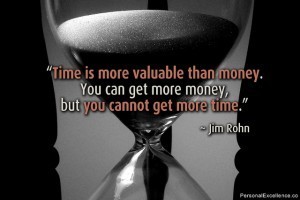 I heard rumors circulating in the halls from other graduate students, such as, “How come he has a US Patent…he is never here!” Yes…because I was not wasting time socializing all day, and therefore I was not seen working, obviously did not mean I was not working. I was just working more efficiently. There were other signs of jealousy – some in my own laboratory who were less helpful when I needed help, or scheduled time with specifically for their help. Dr. Roman Perez-Soler was also great about “greasing the wheel” – making sure if I needed help, the help was available to me. The times I did not receive the help I needed in a timely manner – he used his brilliance in diplomacy to help me with other employees and dispel any rumors about how I was spending my time.
I heard rumors circulating in the halls from other graduate students, such as, “How come he has a US Patent…he is never here!” Yes…because I was not wasting time socializing all day, and therefore I was not seen working, obviously did not mean I was not working. I was just working more efficiently. There were other signs of jealousy – some in my own laboratory who were less helpful when I needed help, or scheduled time with specifically for their help. Dr. Roman Perez-Soler was also great about “greasing the wheel” – making sure if I needed help, the help was available to me. The times I did not receive the help I needed in a timely manner – he used his brilliance in diplomacy to help me with other employees and dispel any rumors about how I was spending my time.
He also took the time to explain to me the politics – the reasons why certain people were acting the way they were acting. He helped me understand people better. For the first time in my life, through Roman Perez-Soler’s mentoring – I could see there is often a reason for someone’s bad behavior – their past bad experiences or their feelings of inadequacy. Let’s face it…how would you feel if you were a senior researcher who had worked on the same project, did not have success with the project, then a brand new twenty-one year old student came in, solved the problem and earned a US Patent? It was my first exposure to the idea, “Seek First to Understand”, written by Stephen Covey in Seven Habits of Highly Effective People, well before I had ever heard of Stephen Covey or his work. My mentor just knew instinctively to “Seek First to Understand” other people and he taught this to me first hand.
Ten Most Important Leadership and Management Lessons
 My biggest regret and dread, when I decided to leave graduate school to pursue a career in financial services, was having to tell Dr. Roman Perez-Soler – leaving the man who had taught me so much and treated me so well.
My biggest regret and dread, when I decided to leave graduate school to pursue a career in financial services, was having to tell Dr. Roman Perez-Soler – leaving the man who had taught me so much and treated me so well.
I was poor, I was struggling to survive, borrowing money each year to stay in school, and I could see the difficult future for research as many professors/researchers, even at MD Anderson Cancer Center were having uncertainty with their jobs – no grant money equals no job. If you do not receive grants for your research, since the grants pay for your salary as a researcher, as well as the salaries of all the employees in your laboratory (and all ongoing supplies and overhead to the institution) – you lose your job. This was happening to many researchers – some of my fellow students had to change laboratories or even change universities because their mentors’ grants did not get funded.
Research, in general, is not a high paying career. I was also facing the prospect if I kept borrowing money for school, money that needed to be paid back at some point – I may never be able to pay it back based upon the present salaries in research. So I made a decision to pursue a career in financial services – a field I also enjoyed. (I mentioned that I took a course in Investments and a course in Risk Management and Insurance at Cornell University – in this previous blog).
So, I knew I needed to find a career with more certainty and better prospects – and I approached my mentor, Dr. Roman Perez-Soler with great trepidation. When I told him, he taught me another great lesson as an example of treating people right. He took me out to dinner, and he said, “Ken…I don’t know why any American male would want to do research to begin with.” He was a doctor – not a straight Ph.D. – he understood the difficulty in having to publish papers, write grants, and constantly search for funds just to have a job (we have a saying in research – “publish or die”, meaning, if you are not constantly writing new papers, grants, and keeping your name/research pertinent – your job and research will cease to exist).
He understood the reasons why I was making my decision and he thanked me for my hard work. Furthermore, he said the nicest words to me anyone, even to this day has ever said to me. He said, “Ken…it must be hard to be you. I was only good at math and science so I knew I should be a doctor…but you, you are good at everything…it must be hard to be you.”
 I was blown away – the most brilliant man and the greatest mentor I have ever known – a man who had taught me so much, to make such a nice statement about me! To this day, I will always remember Dr. Roman Perez-Soler’s words, lessons, and kindness toward me.
I was blown away – the most brilliant man and the greatest mentor I have ever known – a man who had taught me so much, to make such a nice statement about me! To this day, I will always remember Dr. Roman Perez-Soler’s words, lessons, and kindness toward me.
The lessons he taught me are so numerous and so important, there is value in summarizing those lessons below. These are the ten most important leadership and management lessons I learned from my mentor, Dr. Roman Perez-Soler:
1) Set Proper Expectations From The Beginning
2) Inspect What You Expect
3) Empower People To Make Decisions
4) Time Management (Work Efficiently)
5) Give People Ownership In Their Work
6) Give People Credit For Their Accomplishments (Give Credit Where Credit Is Due)
7) Treat People Right – “Lift Up Management”
8) Use Diplomacy (“Seek First To Understand”) – Grease The Wheel Between Employees
9) Build On Your Strengths And Do What You Love
10) Be Approachable (Open Door Policy)
Dr. Roman Perez-Soler – Continuation of His Brilliant Career
Having worked with such a wonderful and brilliant man as Dr. Roman Perez-Soler, I was sure I would find some information about his current career. I am proud to share with you what I found online.
The following is a description of Dr. Roman Perez-Soler from Albert Einstein College of Medicine’s website:
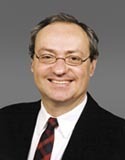 “ Roman Perez-Soler, MD, is chairman of the Department of Oncology and chief of the Division of Medical Oncology at Montefiore. He is a professor of Medicine and Molecular Pharmacology at the Albert Einstein College of Medicine. A native of Spain, Dr. Perez-Soler received his medical degree from Universidad Autonoma in Barcelona, where he also completed a residency in Internal Medicine. He completed his fellowship in Medical Oncology at the University of Texas, M.D. Anderson Hospital Cancer Center. Dr. Perez-Soler has received numerous awards for his accomplishments, particularly in lung cancer research, and is considered an international cancer expert in experimental cancer therapy.”
“ Roman Perez-Soler, MD, is chairman of the Department of Oncology and chief of the Division of Medical Oncology at Montefiore. He is a professor of Medicine and Molecular Pharmacology at the Albert Einstein College of Medicine. A native of Spain, Dr. Perez-Soler received his medical degree from Universidad Autonoma in Barcelona, where he also completed a residency in Internal Medicine. He completed his fellowship in Medical Oncology at the University of Texas, M.D. Anderson Hospital Cancer Center. Dr. Perez-Soler has received numerous awards for his accomplishments, particularly in lung cancer research, and is considered an international cancer expert in experimental cancer therapy.”
This hyperlink is another description of Dr. Roman Perez-Soler from vitals.com as well as his recognition as a Castle Connolly Top Doctors: New York Metro Area™ 2012.
Below are some videos about Dr. Roman Perez-Soler:
Dr. Roman Perez-Soler is the most brilliant man I have ever known personally, and beyond that – a great person! I am proud to have studied and been mentored by such an extraordinary man!
I have never forgotten the lessons he taught me during our time together about true leadership and management. I will always be grateful to have worked with this amazing man!
If you have not done so already…pick up your copy of Mentor Me today!
Click Below, Enter Your Information, and Buy Mentor Me:
Warmly,
Ken Poirot
Financial Professional and Scientist of Life
June 15, 2014
Mentor Me: GA=T+E—Motivation, Pleasure Versus Pain, and Glossophobia
As I wrote in Chapter V of Mentor Me:
“Similar to how some people learn more through visual, auditory, or kinesthetic stimuli, what you will find in life is there are two types of people when it comes to motivation for their actions. Specifically, how people go about making their decisions and deciding what actions to take (remembering that inaction is also a choice and an action in itself). Some people are motivated by pleasure while others are motivated by pain, or to be more accurate, the avoidance of pain. (In Freudian psychology, this is called the “pleasure principal.”)
This “pleasure principle” deals with people’s basic emotions. If you think about it, this is really the primitive brain and animalistic motivations we would have needed to survive in the wild. These are the raw emotions that drive our daily actions and decisions in life.
Some people choose occupations that are high profile, take lots of risks in life, and keep trying to achieve their goals no matter how much pain is thrown their way—because they are driven by the thought of the pleasure their actions will eventually give them when they succeed. Other people are driven by pain, or the avoidance of pain. They play it safe so as not to get hurt—in their careers, in their personal relationships, and in their daily decisions. The fear of pain can be a powerful motivator for these individuals to help them take action.
 In order to best motivate yourself, you need to determine what motivates you. Are you motivated more by gaining pleasure or by pain (i.e., the avoidance of pain)? What is the best way to motivate you?
In order to best motivate yourself, you need to determine what motivates you. Are you motivated more by gaining pleasure or by pain (i.e., the avoidance of pain)? What is the best way to motivate you?
…Let’s use an example—something with which we are all familiar. The majority of people have some anxiety about, or associate fear with, public speaking (glossophobia—the fear of public speaking).
…Per the National Institute of Mental Health (11/23/2013), 74 percent of people have a fear of public speaking and experience some level of anxiety associated with this activity. It is usually listed as people’s number-one fear. It is often said more people are afraid of public speaking than they are of death!”
I am reminded on a regular basis, with all the turmoil in the Ukraine, and a seeming revival of the Cold War, the power of becoming a great orator or public speaker. The most prolific public speakers in history are usually the ones who became leaders and whose names echo throughout history. Above is a statue of Lenin; I took this photo in Sevastopol, Ukraine.
Most Ukrainian cities have a statue of Lenin somewhere in their cities. Lenin it is said, was a great public speaker. He must have been in order to direct such a sweeping revolution in Russia, as well as influence his generation and future generations toward his vision of society.
With the recent revolution that just took place in Kiev, many cities in the Ukraine did topple their statues of Lenin. It seems toppling statues has become a symbol of getting rid of the past way of life and turning the page on old regimes. In essence, toppling statues of past leaders, such as Lenin, has become a symbol of revolution in many ex Soviet republics – rejecting the past and turning toward the hope of a different and better tomorrow.
We have seen this carried out all over the world when old regimes fell, such as widely publicized videos and photos of statues of Saddam Hussein being toppled in Iraq when Saddam Hussein’s regime fell.
This statue of Lenin in my photo above is still erect in Sevastopol, as Sevastopol was a very pro-Russain city well before the recent changing of hands from the Ukraine to Russia. I know of a statue of Lenin in Kherson, Ukraine, in the city center, which was toppled as a symbol of the rejection of the pro-Russian government ousted in Kiev. I visited Kherson, Ukraine, roughly a year before the recent revolution and political changes in the Ukraine.
My Speech in Kherson, Ukraine
 At the time, I was dating someone there in Kherson, and meeting her friends/sister for the first time (the picture on the left is of everyone for which I had to deliver a speech – most of whom I was first introduced that evening).
At the time, I was dating someone there in Kherson, and meeting her friends/sister for the first time (the picture on the left is of everyone for which I had to deliver a speech – most of whom I was first introduced that evening).
So I had to give a speech in Kherson – knowing all would scrutinize me, compare notes, form opinions of me based upon my speech, and hang onto/analyze my every word. Additionally, I knew I would be fielding questions after my speech – not knowing exactly what would be asked of me – all before, during, and after dinner.
Of course, what makes giving a speech in a different culture, language, and country more challenging is making sure you have a deeper understanding of the cultural context, as well as keeping your words as simple as possible (requiring more thought), so your words are more easily translated (through a translator), and reflect positively on you.
I can say, I did just that. The day after dinner, I was told that all those present that evening were very impressed with me. It turned out to be a fun and interesting evening.
Famous Speech During My lifetime – Ronald Reagan
During these troubling times in the Ukraine and the renewed tensions between the United States, the world, and Russia, I am reminded of a famous speech (the most moving speech I witnessed in my lifetime, and events that took place as a direct result of this speech that literally changed the world) given by Ronald Reagan. Reagan’s famous, “Mr. Gorbachev…Tear Down This Wall” Speech, with regard to the Berlin Wall. Here is a portion of this speech along with the end result of Reagan’s moving speech years later – the fall of the Berlin Wall (and some would say the precursor to the fall of the Soviet Union)!
So I am constantly reminded of the power of public speaking, its meaning in leadership, and literally having the ability to change the world!
Yes, so many people experience the fear of public speaking. As mentioned earlier in this blog – it is often quoted more people are afraid of public speaking than even death…so I had to look for the original study this was based upon. I found a great reference to this original study online and I quote/reference it in Mentor Me as below:
“The most famous survey, which identified the fear of public speaking as people’s #1 fear was the 1973 Bruskin survey published in David Wallechinsky, Irving Wallace, and Amy Wallace’s book, The Book of Lists. 3,000 Americans were asked to list their greatest fears. The largest group—41 percent—reported their greatest fear was speaking in front of a group.”
Here is a link referencing this specific study: Fear of Public Speaking Study.
No matter what your fear – public speaking or something else – it is necessary to motivate yourself past your fear In Order to Achieve Your Goal(s)
Maybe your greatest fear is public speaking, as we have discussed. If your Greatest Achievement (GA) or one of your goals in life is leadership – you will need to motivate yourself past this fear – as we have seen the power of great speakers to literally change the world (Lenin and Reagan). Public speaking is one of those necessary functions of great leaders – perfecting that skill can having enduring repercussions.
If your Greatest Achievement (GA) or goals in life are something else – you will inevitably have activities to fulfill on a daily basis in order to achieve these goals. Whether you are fearful of these activities or not – you will need to motivate yourself to achieve them, and therefore move yourself closer to your goal.
Motivation Through Understanding Pleasure Versus Pain
So, for this reason – to formulate how to best motivate yourself, you will need to understand if you are more motivated by gaining pleasure or the fear of pain.
As I wrote in Mentor Me, Chapter V:
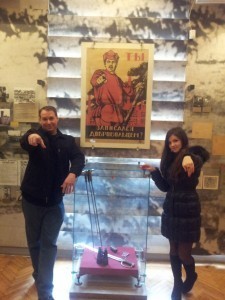 “If you are more motivated by gaining pleasure, often you can deal with pain due to the knowledge that you will attain pleasure in the future (“delayed gratification”). So in order to best motivate yourself, you will need to focus, think about, visualize, and write down all the pleasure you can imagine receiving from attaining your goal(s) and your Greatest Achievement (GA). Remind yourself of this pleasure on a regular basis, in order to keep yourself focused to take action on the daily/weekly activities necessary to get you there.
“If you are more motivated by gaining pleasure, often you can deal with pain due to the knowledge that you will attain pleasure in the future (“delayed gratification”). So in order to best motivate yourself, you will need to focus, think about, visualize, and write down all the pleasure you can imagine receiving from attaining your goal(s) and your Greatest Achievement (GA). Remind yourself of this pleasure on a regular basis, in order to keep yourself focused to take action on the daily/weekly activities necessary to get you there.
If you are motivated more by pain (or, avoidance of pain), then you will need to frame your thoughts, feelings, and emotions on visualizing all the pain it will cause you if you do not take action. Write down how it will affect you emotionally—all the pain it will cause you if you do not achieve your goal(s) or attain your Greatest Achievement (GA).
Now you also know how best to motivate not only yourself, but also how to motivate others to take action. To motivate others, walk them through this same exercise and use the same example, the fear of public speaking. Once you understand how someone is motivated, by pleasure or by pain (or, avoidance of pain), you will understand how to best formulate a strategy and the words to help them take action.”
If you are motivated by pleasure – then it is a matter of keeping yourself focused on the “delayed gratification” – the thoughts, emotions, and vision of what the end result of your achievement will be like for you. To put it into words/feelings – this same process as outlined in Mentor Me – the experience of achieving your specific goal.
If you are motivated more by the fear of pain, specifically, the pain not achieving your goal will cause you, then it is a matter of formulating in words, and experiencing the painful emotions of not achieving your goal. Using these thoughts and emotions as your motivation – as I walk you through in Mentor Me.
As I mentioned in a previous blog, “Mentor Me: GA=T+E—Initial Reviews” – courage is not the lack of fear – it is being afraid and doing it anyway.
Either way, the result of you taking action – either having great courage (motivating yourself past your fear), or motivating yourself using pleasure (“delayed gratification”) – comes with great rewards. …you may just change the world!
If you have not done so already…pick up your copy of Mentor Me today!
Click Below, Enter Your Information, and Buy Mentor Me:
Warmly,
Ken Poirot
Financial Professional and Scientist of Life
Mentor Me: GA=T+E—Learning Modality and Learning Efficiency
As I wrote in Chapter V of Mentor Me:
“It is important to understand how you learn most effectively. People learn information in different ways based upon what we call their learning modality. Some people learn better visually while others learn better by listening (auditory), and still others learn better by tactile means, kinesthetic touch, and body movements.
We are all students of life, and we need to learn new things all the time. In addition, in order to fulfill your Greatest Achievement (GA), you may need to gain a certification, earn a degree, take some classes, or learn some new skill(s).
 If you learn visually, you will absorb new information best through seeing it in pictures, graphs, charts, diagrams; viewing illustrations with instructions; watching an instructor; and taking notes. In contrast, if you are an auditory learner, you will learn best through verbal lectures, discussions, and listening to what others have to say about the subject. You will cue in on variances such as the tone, voice, pitch, speed, and idiosyncrasies of someone’s speech to best remember and learn. Also, you will find reading and written information not as easy to remember as spoken words. Auditory people need to hear the written words so they can recall the information. For this reason, if you learn best by the auditory modality, you will benefit most by reading aloud or using a tape recorder for lectures and playing back the recordings.
If you learn visually, you will absorb new information best through seeing it in pictures, graphs, charts, diagrams; viewing illustrations with instructions; watching an instructor; and taking notes. In contrast, if you are an auditory learner, you will learn best through verbal lectures, discussions, and listening to what others have to say about the subject. You will cue in on variances such as the tone, voice, pitch, speed, and idiosyncrasies of someone’s speech to best remember and learn. Also, you will find reading and written information not as easy to remember as spoken words. Auditory people need to hear the written words so they can recall the information. For this reason, if you learn best by the auditory modality, you will benefit most by reading aloud or using a tape recorder for lectures and playing back the recordings.
In contrast, if you are a kinesthetic learner, which is the rarest (I have seen statistics that state they represent about 5 percent of the population), you will learn best by doing physical activities with your body, such as dance, or by touching objects.
 The best illustration of this, I have found, can be seen in how people learn a new language. Ask yourself, how is the best way for you to learn a new language? Do you learn best by looking at the words and writing, listening and speaking, or by doing an activity associated with the motions that describe the word?”
The best illustration of this, I have found, can be seen in how people learn a new language. Ask yourself, how is the best way for you to learn a new language? Do you learn best by looking at the words and writing, listening and speaking, or by doing an activity associated with the motions that describe the word?”
If you do not know Russian, look at the sign in the photo on the left: what do you think it says? Reading it with our familiar English alphabet (Latin alphabet) and not in the Russian, Cyrillic alphabet, most people read it as, “Nah O Pama.” What this really says in Russian, is a word that is familiar in the English vocabulary, “Panorama.” What makes it extra difficult to learn Russian having known English, is (as you can see from this example) many of the letters in their alphabet are the same as the English letter, but with a completely different sound of another letter we may be familiar with in English.
 This photo was taken by me, during one of my trips to Sevastopol, Ukraine (now part of Russia per the recent Russian action in the Crimea – Sevastopol is the city where Russia’s Black Sea Fleet is stationed). “Panorama” refers to a rounded building in Sevastopol, where there are models of the three wars Sevastopol has been through in their past (photo on the left of the Panorama Museum).
This photo was taken by me, during one of my trips to Sevastopol, Ukraine (now part of Russia per the recent Russian action in the Crimea – Sevastopol is the city where Russia’s Black Sea Fleet is stationed). “Panorama” refers to a rounded building in Sevastopol, where there are models of the three wars Sevastopol has been through in their past (photo on the left of the Panorama Museum).
How is the Best Way for You to Learn a New Language?
I came up with this thought after thinking about my own experiences with learning, specifically, my previous travels to the Ukaine, and my inability to absorb the Russian language just from listening (auditory learning modality) – in contrast to how I learned French in high school (visual learning modality), I had a much easier time absorbing French, because I could visualize the letters, since French uses our same English alphabet, and therefore I could see the words, letters, or at least visualize the words when they were spoken to me.
 Russian, in contrast, I had no way to visualize the new sounds, letters, or how a word even might appear, since I do not know the Cyrillic alphabet. I thought, this is the best way to describe to someone the difference in learning modalities, since most people learn a new language at some point in their studies in school; most people can relate to the experience of trying to learn a new foreign language. For example, after five trips to the Ukraine, I finally started to visualize some words in Russian and figure out some words, but I could only do this by visualizing the words and letters, since my learning modality is visual. For example, the sign in this photo above – I figured out this says aquarium (because one of my friends told me there was an aquarium in the city center of Sevastopol and I had walked by this building probably over two dozen times in my two visits – I finally figured out this sign says aquarium).
Russian, in contrast, I had no way to visualize the new sounds, letters, or how a word even might appear, since I do not know the Cyrillic alphabet. I thought, this is the best way to describe to someone the difference in learning modalities, since most people learn a new language at some point in their studies in school; most people can relate to the experience of trying to learn a new foreign language. For example, after five trips to the Ukraine, I finally started to visualize some words in Russian and figure out some words, but I could only do this by visualizing the words and letters, since my learning modality is visual. For example, the sign in this photo above – I figured out this says aquarium (because one of my friends told me there was an aquarium in the city center of Sevastopol and I had walked by this building probably over two dozen times in my two visits – I finally figured out this sign says aquarium).
Russian Words I Learned Since Now I can visualize some Russian Words
It is funny to me – so much of Russian, not knowing the Cyrillic alphabet, looks almost like hieroglyphics to me. I joke with my Ukrainian friends that the number “3″ is one of the letters of their alphabet.  It is true, look at the next word:
It is true, look at the next word:
Запорожье (sounds like Zjap ohro zjia)
 This is the name of one of their cities in the Ukraine – Zaporozhye (the photo on the left is one of the churches in Kiev). Now after visiting the Ukraine so many times, I understand the letter “3″ has more of a “Z” sound (more like a “Zj”, as their language has many sounds we do not have in English). Ukrainians laugh and have told me us Westerners have lazy mouths and lazy ears; Russian has many different sounds formed in different areas of the mouth that “us Westerners” are just not accustomed to hearing or reproducing.
This is the name of one of their cities in the Ukraine – Zaporozhye (the photo on the left is one of the churches in Kiev). Now after visiting the Ukraine so many times, I understand the letter “3″ has more of a “Z” sound (more like a “Zj”, as their language has many sounds we do not have in English). Ukrainians laugh and have told me us Westerners have lazy mouths and lazy ears; Russian has many different sounds formed in different areas of the mouth that “us Westerners” are just not accustomed to hearing or reproducing.
Below are some of the most important words I know in Russian: (I always want to be polite, especially when I travel, and as I wrote in Mentor Me, some things – like coffee – are very important to me.) 
спасибо (sounds like “spi see bo”) – this means “thank you”
привет (sounds like “piv iet”) – this is the familiar way of saying “Hi”
пожалуйста (sounds like “puh jow oostaha”) – this means “please”
кафе американо (sounds like “cafe Americano”) – this means coffee, if you just say “cafe” you will receive espresso
до свидания (sounds like “dos vidaniya”) – this means “goodbye”
покa (sounds like “po kah”) – this is the more familiar way of saying “bye”
So when you think of what is the best way you learn a new foreign language – you will know your learning modality and how to focus your study time in order to maximize efficiency for any new material, in any subject, you may learn.
In Mentor Me, I present a trial and error process/approach I discovered to help me learn information most efficiently with high retention. It served me well throughout high school, my university/graduate school studies, and for all the licensing exams I needed to pass for my professional licenses. See Mentor Me for that process/approach.
Kinesthetic learning modality is very rare, but regardless of how you learn – the more stimuli you use – sound, sight, touch, motion, etc… – the more you combine stimuli and incorporate the maximum number of stimuli into your learning time, the easier it will be for you to learn and retain new material.
If you have not done so already…pick up your copy of Mentor Me today!
Click Below, Enter Your Information, and Buy Mentor Me:
Warmly,
Ken Poirot
Financial Professional and Scientist of Life
June 13, 2014
Mentor Me: GA=T+E—Coach Gehrhardt, “G-Man”, “High-Impact and Low-Impact Days” Strategy, Management
In looking online for references and material about my beloved cross country and track coach, Coach Gehrhardt, I knew I would find some great information. Why? …because he was good at what he did – inspiring and getting the best out of the kids he coached.
There are invaluable lessons to learn from Coach Gehrhardt; he taught me a great deal about what it means to be a truly great leader and coach. Of course, he was well-read on the subject of running – he had acquired the technical skills and know-how necessary to be a good coach from a technical perspective.
[image error]The intangibles that Coach Gehrhardt has though, these are the qualities that take a good technical coach and catapult an individual to true greatness: passion and care.
Coach Gehrhardt was a dynamic leader. High energy, high emotion – he poured all of himself into his kids. This was a man who taught full-time in another school district, yet came long distance to Northport High School after a full school day, to give of himself to his kids. He didn’t do it because of the money – I can assure you, as coaches are certainly not paid much for all they do and all their responsibilities. He did it for one reason – love.
Coach Gehrhardt loved the kids he coached; he loved the sport of running and most of all – he loved to give of himself – inspire his kids and help them achieve greater success than they ever could have imagined.
Before I tell more about my personal story with Coach Gehrhardt, I will share a truly touching story I found online about Coach Gehrhardt, written by a colleague. This story will give you an glimpse from a different perspective, from a peer coach, about the passion and care of this amazing man.
Touching Story About Coach Gehrhardt Written by a Colleague
“I have a good friend named Bill Gehrhardt. We met about 25 years ago when I first started coaching at St. Anthony’s and he was an accomplished coach at Commack North H.S. Commack was two high schools back then. Bill’s specialty as a coach was the relationships he built between himself and his athletes and the way he could sell his ideas and passions to his teams.
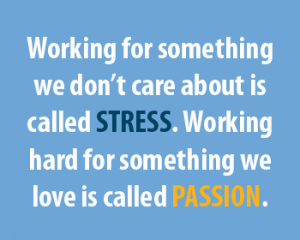 Bill’s passion was the 800m; but more specifically, the 4x800m relay. I’m not sure why this came to be “the” distance for him. He was an average sprinter and jumper, in college. He did graduate from Chaminade H.S., and the CHSAA is 4 x 800 crazy, but Bill didn’t run track in high school. His strict father wouldn’t allow it. I suspect he caught the bug at St. John’s University, where he was a teammate of Tommy Farrell, who won a bronze medal in the 800m at the 1968 Olympics in Mexico City. Whatever the case, I know he was enamored with speed and aggression; which seemed to be an extension of his fighting personality. He was confrontational, passionate, and one of the nicest guys I ever met.
Bill’s passion was the 800m; but more specifically, the 4x800m relay. I’m not sure why this came to be “the” distance for him. He was an average sprinter and jumper, in college. He did graduate from Chaminade H.S., and the CHSAA is 4 x 800 crazy, but Bill didn’t run track in high school. His strict father wouldn’t allow it. I suspect he caught the bug at St. John’s University, where he was a teammate of Tommy Farrell, who won a bronze medal in the 800m at the 1968 Olympics in Mexico City. Whatever the case, I know he was enamored with speed and aggression; which seemed to be an extension of his fighting personality. He was confrontational, passionate, and one of the nicest guys I ever met.
We hit it off right away despite our 20 year age difference. There wasn’t a thing we couldn’t talk about and we enjoyed a good laugh; the kind of laugh that makes you sick to your stomach, and only happens with the closest of friends.
While at Commack, Coach Gehrhardt had a herd of half milers under 1:58 and three under 1:54, including John McNelis, who held the Suffolk County record of 1:51.46 from 1982 until 2000, when it was broken by the slimmest of margins by Paul Ciurlys of Walt Whitman in 1:51.35. John’s brother Brian ran 1:52 open and 1:50 on a relay. He would later run 1:46 for Georgetown on the DMR at the Penn Relays, that broke Villanova’s string of 13 straight victories. The relay was led off by Phil Reilly of Baldwin and anchored by a guy named Gregorek, in 3:56. “G-Man” had another boy named Ahearn run 1:53. That’s all great stuff but as previously noted, he LOVED the 4x 800. In 1981 his 4 x 800 won the Eastern States Meet in 7:43.5, which is still the Suffolk County record.
Coach Gehrhardt’s relays won many County Championships and his teams did very well, but he never won a County Team Championship or a 4 x 800 state title. The year his relay ran 7:43, he decided to run them in the 4 x 400 in the County Meet/State Qualifier. His team ran 3:18, Brian McNelis anchored in 47, and they lost to Rich Panker’s North Babylon team led by the current HHHWest coach, Jim Christian. NB ran 3:16.9. That decision, to run the 4 x 4, would haunt him until the end of his career.
 Around 1988, he started coaching at Northport, and the County 4×800 Championships continued, as well as numerous sub 2:00 runners, including sons Bobby (1:57) and Billy (1:59). I joined Bill at Northport as the Girls’ Coach in ’95 and a couple of years later took the Boys’ Spring team, too. Bill continued to coach XC and Winter Track. Then, after 25 years of coaching, he announced that XC 2001 and Winter Track 2001-2002 would be his last. Over the next several months, we spoke often of his career, successes, failures, and McNelis’ 800 record going down the year before, but that he still had his 7:43.5.
Around 1988, he started coaching at Northport, and the County 4×800 Championships continued, as well as numerous sub 2:00 runners, including sons Bobby (1:57) and Billy (1:59). I joined Bill at Northport as the Girls’ Coach in ’95 and a couple of years later took the Boys’ Spring team, too. Bill continued to coach XC and Winter Track. Then, after 25 years of coaching, he announced that XC 2001 and Winter Track 2001-2002 would be his last. Over the next several months, we spoke often of his career, successes, failures, and McNelis’ 800 record going down the year before, but that he still had his 7:43.5.
 The fall of ’01 held some promise as Northport had a talented leader named Frank Corrigan, who would vie for a county title, and a freshman named Kevin Tschirhart. His team started the season well and only got better. Corrigan got his title and Gehrhardt got his first County Team Championship; strangely enough, in XC, a sport he didn’t coach at Commack North. The team would go on to bring home a 5th place plaque from the State Federation Meet and put a stamp on one of the best seasons of his career.
The fall of ’01 held some promise as Northport had a talented leader named Frank Corrigan, who would vie for a county title, and a freshman named Kevin Tschirhart. His team started the season well and only got better. Corrigan got his title and Gehrhardt got his first County Team Championship; strangely enough, in XC, a sport he didn’t coach at Commack North. The team would go on to bring home a 5th place plaque from the State Federation Meet and put a stamp on one of the best seasons of his career.
The 2001-2002 Winter Track season started amidst great excitement, as the team was strong with nice balance. The focus of the season would be the County Championship and of course, getting the 4×800 to the State Meet. The team developed nicely by the Counties and had one of those perfect meets that coaches dream about. So, in the last team championship Bill Gehrhardt would ever coach, he got his 1st County Team Track and Field Championship. Imagine that, his last two seasons and his first two county titles. But there was still that matter of his beloved 4 x 800…which qualified for the State Championships in Syracuse.
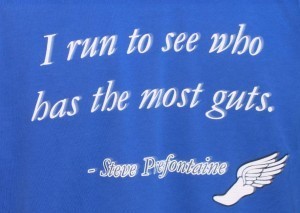 I remember that 4 x 8 in the Carrier Dome as being a bit surreal. Northport wasn’t favored, but expected to be in the mix. I don’t think Coach Gehrhardt thought a state title was likely because he let his lead-off leg run the 3200m first, where he finished far out of the money. You know when a pitcher in the major leagues has a no-hitter late in the game and they show the pitcher sitting in the dugout when his team is up and there’s no one near him? That’s kind of the way it was when the relay started. Northport got out to an early lead and increased it. I started to get very nervous as Arlington started to make up some ground. I looked over at G-Man and he was overtly nervous and mumbling to himself. With about 300m to go, it was looking pretty good to me, so I yelled out, “I think they’re going to do it, Bill”! Without even looking at me he yelled, “Shut the hell up, Timmy”! As Northport’s anchor entered the last lap, it was starting to look good to him, too. G-Man seemed to be in disbelief and at the same time, waiting for the sky to fall in. Surely, after so many opportunities this wasn’t going to happen, was it? “Stay on your feet”, “Hold on to that stick”, were repeated over and over until the last straightaway, when I looked over at him and he had his arms in the air and bellowed, “I think we’ve got it, I think we’ve got it, oh my god, we did it”. When the anchor leg crossed the line, my eyes immediately welled up. I looked over at Bill and he was crying. I went over and put my arm on his shoulder and shook his hand as he hurried down to see his boys. I slumped into my chair. I couldn’t stop smiling. I was so happy for him, and couldn’t believe the beauty of it all. This terrific man, my good friend, who gave so much of his life to teaching and coaching youngsters, who was the most successful middle distance coach of his era on LI, who had never fulfilled his dream of winning a State Championship in the 4 x 800, did just that in the last race he would ever coach.”
I remember that 4 x 8 in the Carrier Dome as being a bit surreal. Northport wasn’t favored, but expected to be in the mix. I don’t think Coach Gehrhardt thought a state title was likely because he let his lead-off leg run the 3200m first, where he finished far out of the money. You know when a pitcher in the major leagues has a no-hitter late in the game and they show the pitcher sitting in the dugout when his team is up and there’s no one near him? That’s kind of the way it was when the relay started. Northport got out to an early lead and increased it. I started to get very nervous as Arlington started to make up some ground. I looked over at G-Man and he was overtly nervous and mumbling to himself. With about 300m to go, it was looking pretty good to me, so I yelled out, “I think they’re going to do it, Bill”! Without even looking at me he yelled, “Shut the hell up, Timmy”! As Northport’s anchor entered the last lap, it was starting to look good to him, too. G-Man seemed to be in disbelief and at the same time, waiting for the sky to fall in. Surely, after so many opportunities this wasn’t going to happen, was it? “Stay on your feet”, “Hold on to that stick”, were repeated over and over until the last straightaway, when I looked over at him and he had his arms in the air and bellowed, “I think we’ve got it, I think we’ve got it, oh my god, we did it”. When the anchor leg crossed the line, my eyes immediately welled up. I looked over at Bill and he was crying. I went over and put my arm on his shoulder and shook his hand as he hurried down to see his boys. I slumped into my chair. I couldn’t stop smiling. I was so happy for him, and couldn’t believe the beauty of it all. This terrific man, my good friend, who gave so much of his life to teaching and coaching youngsters, who was the most successful middle distance coach of his era on LI, who had never fulfilled his dream of winning a State Championship in the 4 x 800, did just that in the last race he would ever coach.”
As written by Tim Dearie, “And the First Shall Be Last”, 12/06/07 – you can see the full story here by using this hyperlink for Coach Gehrhardt.
My Personal Story – I was not the star athlete
This story is a good summation of the passion, care, and yes, personal sacrifice my coach made for both the kids and the sport he loved.
I was never a star athlete – in fact, in school I was the kid almost always picked last for sports. In the elementary school years, when us kids would appoint captains for choosing teams or during gym class – the captains were always the best athletes. I have many a painful memory of waiting to be called by a team captain to be chosen for a team and looking around until I was the last one standing. The captain would begrudgingly accept me on their team because they had to – there was no one left to pick!
Usually, my role would be to stand somewhere I could do the least harm. That was my experience with sports in elementary school. Things started to change for me in junior high school. I met and became best of friends with an incredible athlete – Gary.
 Gary amazed me. He had boundless athleticism, poise, balance, and speed. He was the perfect package – built for sports. He could pick up almost any sport and seemingly master it without even trying. Pure athletic talent and musculature that was the envy of every boy in school; Gary was the athlete in form and function most boys wish they could become some day. His trophies and accolades for sports – soccer, wrestling, any sport he tried, could fill a room.
Gary amazed me. He had boundless athleticism, poise, balance, and speed. He was the perfect package – built for sports. He could pick up almost any sport and seemingly master it without even trying. Pure athletic talent and musculature that was the envy of every boy in school; Gary was the athlete in form and function most boys wish they could become some day. His trophies and accolades for sports – soccer, wrestling, any sport he tried, could fill a room.
Gary, of course, would always end up as captain when we played sports at school or for fun. To this day, I don’t know if it was out of pity, or just the sheer loyalty of friendship, but Gary would always pick me first for his team; it was a welcome change for me, still reeling from those painful elementary school memories of not being wanted on anyone’s team.
Gary always got the best from me when it came to performance. We worked well together as a team. We were best of friends, so we could communicate without words – very helpful in the heat of battle in the fast-paced gridiron of sports.
Gary also taught me about lifting weights and he became, in essence, my personal trainer. I learned almost everything I know about working out, different exercises for building muscles, and training from Gary. To this day, the fact I go to the gym and work out – I owe this all to Gary.
So needless to say, I was not born with athletic abilities or a talent for sports. I began running to drop some weight – I was overweight most of my childhood and running was one way to begin taking the weight off. When I began running track in seventh grade, and then began with cross country in eighth grade (running with the high school kids because junior high school did not have cross country), it was because I had been running already to avoid being “the fat kid”. Track and cross country was just a natural extension of this for me – something I was already doing anyway – running.
You didn’t have to try out for track or cross country – they took everyone and anyone. There were no cuts for that sport – no matter how bad of an athlete you were, you could still run track or cross country.
I tried out for baseball in ninth grade and I did not even make it past the first cut. It was back to track and cross country for me.
Development of the “High-Impact and Low-Impact Days” Strategy
With this backdrop in mind, I began running cross country with the high school team in eighth grade. I did not have speed – I was never going to be a sprinter, but I found what I lacked in speed I could make up for in endurance, so cross country was a natural fit for me.
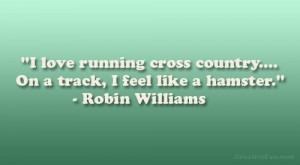 In eighth and ninth grade, we had a good coach. Nice man. I remember good experiences with him, but I was never going to become a top runner in eighth or ninth grade. I was part of the self proclaimed, “Slack Pack”. When us runners would split up to run for practice – generally running on our own for 45 minutes to an hour – I was with the bottom-of-the-pack runners. We chose who to run with, and there was no way I would ever be able to keep up with the top runners, so I hung out with the kids of similar talent to me.
In eighth and ninth grade, we had a good coach. Nice man. I remember good experiences with him, but I was never going to become a top runner in eighth or ninth grade. I was part of the self proclaimed, “Slack Pack”. When us runners would split up to run for practice – generally running on our own for 45 minutes to an hour – I was with the bottom-of-the-pack runners. We chose who to run with, and there was no way I would ever be able to keep up with the top runners, so I hung out with the kids of similar talent to me.
We would go for our practice run – sometimes we would goof off. It was part of being in the “Slack Pack” – no one had any expectations from us. We would run our races during the meets, finish well behind the other kids, and no one really cared. It was just part of not having talent at that level – we knew we were not going to become top runners and everyone, including us, was okay with that.
 All of that changed when I went to high school in tenth grade and Coach Gehrhardt, “G-Man”, came in as coach. He gave us structure where none had existed previously. We did not just simply go out and run for 45 minutes to an hour. All kids, no matter what talent level, were incorporated into a methodical, well-planned running work out schedule.
All of that changed when I went to high school in tenth grade and Coach Gehrhardt, “G-Man”, came in as coach. He gave us structure where none had existed previously. We did not just simply go out and run for 45 minutes to an hour. All kids, no matter what talent level, were incorporated into a methodical, well-planned running work out schedule.
“G-Man” constructed a “Hard Days” (“High-Impact”), “Easy Days” (“Low-Impact”) practice schedule, incorporating days to both tax our muscles to the highest level of maximum performance, as well as days in between to rest our muscles some while still getting a work out.
This was part of my basis and development of the “High-Impact and Low-Impact Days” strategy (presented in Mentor Me) I developed as a financial advisor and later taught as a manager/coach. My days from cross country and my time with Coach Gehrhardt was the beginning of the development for this strategy.
Also this strategy was further developed from my experiences at Cornell University. One semester I took all Science classes, some of which I did not have the prerequisites for, at the graduate school level (as an undergraduate) or taught at the veterinarian school (with all vet school students – the #1 veterinarian school in the nation at the time). Having to compete on a graduate school level for grades, with graduate school Cornell students, taught me a great lesson in not working yourself too hard and/or burning yourself out.
 All classes at Cornell University were graded “on the curve” (bell curve). Meaning, for every A there had to be an F – someone was going to fail out of the class, and depending on their combined grades in other classes, possibly fail out of Cornell.
All classes at Cornell University were graded “on the curve” (bell curve). Meaning, for every A there had to be an F – someone was going to fail out of the class, and depending on their combined grades in other classes, possibly fail out of Cornell.
Undergraduate classes were curved to a B- mean average grade, and graduate school courses were curved to a C+ mean average grade. The curve was set from there – determining what grade you ultimately received on your exam. We had three exams for each class, called “Prelims” (preliminary exams), and then a final exam. Most classes adopted this schedule, so you had all your exams around the same time – concentrating the stress. I think it was done purposely to weed out students and get rid of those who could not handle the pressure.
Also, whereas some of my entry-level undergraduate school classes, namely, Biology, Chemistry, and Calculus, comprised of 800 students (two lectures of 400 in each lecture), graduate school courses were much smaller – approximately 20 to 30 students was more typical (except for my Immunology class with the veterinarian students, which had about 100 students).
It was normal during your exam to be sitting in Barton Hall – the ROTC building with a gym and indoor track, sitting at a table, one of 400 spaced on the track floor with one student on each side, taking an exam with 800 students. You would hear sniffling and sobbing noises during your exam – from the students who knew they were failing out of Cornell. It was a very high stress environment – you were always in competition. All the students were smart – “being average” or just a little better than average was a shock for all of us “straight A” students coming from high school, but it was nothing to be ashamed of in this selective league.
 I remember the first time I received a 28% on an exam (out of 100%), with a standard deviation of 20% for the exam, and a mean grade of 48% – it was a truly a traumatic experience!
I remember the first time I received a 28% on an exam (out of 100%), with a standard deviation of 20% for the exam, and a mean grade of 48% – it was a truly a traumatic experience! 
Of course, as selective as Cornell University was for undergraduate students, they were even more selective for graduate students and veterinarian students.
What this meant to me is, for the first time in my life, I was happy to get that C+, for being “average” among a dwindling pool of an even higher-stringency level of intelligence – competing against Cornell graduate students.
Maybe it was not in my best interest to take Immunology with the vet students (I did not even have Genetics yet, so I clearly did not have the prerequisites for that class), Oncogenes and Cancer Viruses (graduate school level class, again, no prerequisites), Molecular Biology (similar, graduate school, no prerequisites), Physics, and Organic Chemistry all in the same semester. It was not the brightest idea I ever had, but I was immersed in Science…and you know I love Science! 
 That was my most difficult semester, and I also received the worst grades of my life that semester. Having said that, I also took the most amazing classes, was in Heaven since I was surrounded by Science all day long, but I spent very little time hanging out and with friends. I went out a grand total of 8 times that entire semester! I was under high stress all the time and running myself ragged to keep up with my classwork and my studies.
That was my most difficult semester, and I also received the worst grades of my life that semester. Having said that, I also took the most amazing classes, was in Heaven since I was surrounded by Science all day long, but I spent very little time hanging out and with friends. I went out a grand total of 8 times that entire semester! I was under high stress all the time and running myself ragged to keep up with my classwork and my studies.
That experience and the lessons I learned from Coach Gehrhardt combined in the process of developing a strategy for work-life balance – the “High-Impact and Low-Impact Days” strategy.
Incidentally, I finally learned my lesson. My last semester at Cornell University, I figured out I should take only one hard Science class and then add in some easier classes. The hard work I put in during previous semesters had lightened my load going into my last semester.
I took a 600 level Molecular Biology lab, which was a full day long – 8 hours of lab work. Then I took a couple, “blow off” courses – courses I knew I could get easy A’s in – Investment, Insurance and Risk Management (ironic how later in life my “blow off” courses would be the only courses directly related to my financial services career).
I forget what my other class was, but I had no classes on Tuesdays and Thursdays. I got my best grades at Cornell University that semester – 3.85, and also enjoyed a lot of time with my friends. So there you have it – “work-life balance” – “High-Impact and Low-Impact Days” strategy at work. High productivity and high happiness! 
I still had to learn exactly how to adapt this strategy to a career as a financial advisor or manager. The final development of this strategy coalesced during my time as a financial advisor (Investment Officer) for Frost Bank. All of these experiences contributed to the trial and error realization of this “High-Impact and Low-Impact Days” strategy I present in Mentor Me.
Coach Gehrhardt’s Passion, Care, and “I Believe in You”
When we would ask Coach Gehrhardt how we should run a particular work out, keeping our “Hard Days” and “Easy Days” practice schedule in mind, he would famously say, “Run it strong.” I can still hear him saying that at times in my life when things are getting tough…”Run it strong…run it strong!”
 G-Man was also an English teacher, and with the last name of “Poirot”, it was only natural he would think of Agatha Christie’s famous detective, Hercule Poirot, as many people comment on and make that comparison, even to this day. Hercule quickly morphed into Hercules, the Greek son of Zeus, famous for his strength – Herc for short. Quite a flattering nickname for me – Hercules!
G-Man was also an English teacher, and with the last name of “Poirot”, it was only natural he would think of Agatha Christie’s famous detective, Hercule Poirot, as many people comment on and make that comparison, even to this day. Hercule quickly morphed into Hercules, the Greek son of Zeus, famous for his strength – Herc for short. Quite a flattering nickname for me – Hercules!
I would often be competing and hear Coach Gehrhardt cheering me on from the sidelines, “Come on Herc…you can do it Herc!” Encouraging me – rooting for me and my performance.
That is the backdrop for what I wrote in Mentor Me, about Coach Gehrhardt and the power of the word, “believe”:
“I was in high school—the tenth grade. I ran cross country; I was on the junior varsity team, and my coach pulled me aside in the bus before one dual meet. He told me, ‘Ken…I need you to win this race.’ I had never taken first place in a race before—ever! He knelt down to where I was sitting, on eye level with me, looked me straight in the eye, and said, ‘I believe in you… I know you can do it!’
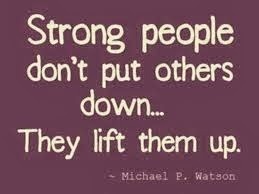 This was a wow moment for me. My coach, Coach Gehrhardt, ‘believed’ in me. He was honest and sincere, and I could see it in his eyes. So, I went out, ran the best I could…and won the race… I came in first place! That was the only time, up to that point, I had ever won a race in cross country!
This was a wow moment for me. My coach, Coach Gehrhardt, ‘believed’ in me. He was honest and sincere, and I could see it in his eyes. So, I went out, ran the best I could…and won the race… I came in first place! That was the only time, up to that point, I had ever won a race in cross country!
It was a very powerful moment for me in my life. I went on to race varsity that year. I set a goal for my senior year—to be the top, number-one runner for my team…to become team captain and get the coveted ‘white letter’—denoting the Most Valuable Player. I can tell you, I did all of those things my senior year with Coach Gehrhardt. It all started with one word, ‘believe,’ and the phrase, ‘I believe in you’…spoken to a kid who had never won a race before.”
That is the impact a great coach or mentor can have on someone’s life. Coach Gehrhardt motivated, inspired, and influenced me in ways that continue to positively affect me in my life even today – many, many years distant from high school.
By his sheer passion, care, love, and commitment, Coach Gehrhardt took a kid with a lack of talent for sports and turned him into the top runner on the team.
That is the mark of a great manager, coach, and leader – lifting people up and inspiring them to perform at a level they never dreamed possible!
If you have not done so already…pick up your copy of Mentor Me today!
Click Below, Enter Your Information, and Buy Mentor Me:
Warmly,
Ken Poirot
Financial Professional and Scientist of Life
June 12, 2014
Mentor Me: GA=T+E—The Letter “Y” – Literal Meaning, Alternate Meaning – Chromosomes and Relationships
From the opening of Chapter IV in Mentor Me, ”As per the statement above, it is important to remember that effective communication is all about understanding other people as best we can. We need to take a step back, ask questions (“Y” is, of course, also a play on the word “Why?”—a reminder to ask questions), and do our best to fully understand the person with whom we are communicating.
[image error]What is also interesting about the letter “Y” is that it is complicated—just like we are all complicated. The letter “Y” can be either a consonant or a vowel, depending on the situation (word). This is similar to how we can all act completely different based upon our current mood and circumstances. We can all be a bit complicated or even contradictory at times.
In different time periods, and in different languages, “I” has been substituted by “Y” (for example, Latin and Middle English, see Wikipedia, http://en.wikipedia.org/wiki/Y). Similarly, the more we understand and learn about ourselves (“I”), the better we can understand someone else (“You”).
[image error]Due to our sometimes contradictory and complicated nature, it is so important to not make assumptions or jump to conclusions. Instead, we need to ask, observe, and listen, so we more completely understand each other.
This chapter explores how to better relate to each other. We can see that by better understanding ourselves (“I”), we can better understand each other (“You”).”
Chromosomes and Relationships…Alternate Meaning of The Letter “Y”
You guessed it…if you have been reading some of my other blog posts here…did I mention Science was my first love? More Science… 
Wow…how complicated are relationships between men and women!? All because of this letter “Y”! From human biology, the study of DNA and chromosomes, we know women have two X chromosomes (XX) and men have an X chromosome and a Y chromosome.
Who would have thought such a seemingly small difference could result in so much chaos and misunderstanding between men and women in relationships (how men and women relate to each other)?
As I wrote in Mentor Me, Chapter IV:
“All over the world, girls have conversations with their girlfriends that sound something like this: ‘And he did this’ or ‘He said that’…and the girlfriends reply, ‘Mmmhmmm, oh…no he didn’t!’ And all the girls agree, ‘He should have known!’
[image error]Well, I am here to tell all the ladies…men don’t know. Men’s brains are wired differently from women’s brains. Men and women do not think or feel the same. Men and women cannot read each other’s minds or feelings—we all need to learn to talk to each other in a constructive way.”
Mentor Me – Relationships bEtween Men, Women, and significant others
As many people have a goal of attracting, improving, or maintaining a personal relationship with a significant other, I peppered information throughout Mentor Me to be helpful with these pursuits.
From the section on ‘Big Rocks’ – the most important task or activities, to putting time on your calendars for your significant other and making them a priority (“The ‘Big Rocks’ Come First”), to “Understanding Personality Styles” – Chapter III, and all the material Chapter III through Chapter VII is directly applicable to relationships with significant others.
While writing Mentor Me I thought about my past relationships and I had an epiphany of sorts. I thought about and analyzed where some of my past relationships went wrong – what could have been handled better and some of the differences between how men and women think, from my personal observations.
That is where I came up with most of the section titled, “Gender Differences in Communication” in Chapter IV. The following is only some of what I wrote:
“So you can see how men and women will differ in their personal relationships—men do tend to have a short-term goal in mind for the relationship, while women tend to want the enjoyment of having the relationship and focus on the long-term experience. It is easy to see why there are so many conflicts between men and women in their relationships.
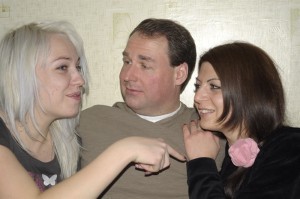 Men most often know what they want, yet they are not always sure how they feel. Women most often know how they feel, yet they may not always know what they want. So women can communicate more effectively with men if they ask them what they want first, then eventually get to the conversation of how they feel. Men can communicate more effectively with women if they ask them how they feel first, then eventually get to the conversation of what they want. We can all find some common ground if we relate to each other with our gender differences in mind, and eventually get to that common ground together.”
Men most often know what they want, yet they are not always sure how they feel. Women most often know how they feel, yet they may not always know what they want. So women can communicate more effectively with men if they ask them what they want first, then eventually get to the conversation of how they feel. Men can communicate more effectively with women if they ask them how they feel first, then eventually get to the conversation of what they want. We can all find some common ground if we relate to each other with our gender differences in mind, and eventually get to that common ground together.”
The above are just examples of thoughts I had with regard to relationships between men and women while in the process of writing – to my knowledge, no one has ever written about this previously. This whole section is a small part of Mentor Me, but there is a lot of information and observations packed into that small section.
Like a lot of what the initial readers are saying about Mentor Me – they like the fact it is concise – packing a lot of useful information into a small package.
As you can also see from this blog and my other blogs – there is a lot more going on in this concise book – thoughts, themes, meanings, than what can be gleaned in just a superficial read. 
If you have not done so already…pick up your copy of Mentor Me today!
Click Below, Enter Your Information, and Buy Mentor Me:
Warmly,
Ken Poirot
Financial Professional and Scientist of Life
June 11, 2014
Mentor Me: GA=T+E—Ken Poirot Career Highlights and Reference Material
From the time it took to write, professionally edit, rewrite, design, and publish Mentor Me, some of the websites for reference materials I have in the book, have already been discontinued or the information was taken down. For this reason, I will provide some of the information on my career highlights, as well as reference material here, so it is readily available and accessible.
 I moved to Houston, Texas after graduating from Cornell University in Ithaca, New York with a B.S. in Microbiology, to pursue my Ph.D. studies in Cancer Research through UT Health Science Center – MD Anderson Cancer Center.
I moved to Houston, Texas after graduating from Cornell University in Ithaca, New York with a B.S. in Microbiology, to pursue my Ph.D. studies in Cancer Research through UT Health Science Center – MD Anderson Cancer Center.
The culmination of this time in research resulted in a US Patent for Lipid Complexed Topoisomerase I Inhibitors. The website I downloaded the patent from and referenced in Mentor Me, Patentstorm.com, is no longer in business, so I will provide another website where it can be accessed on Google Patents.
Since I have a copy of this patent in .pdf format, I have also provided a downloadable version of this patent below:
US Patent #5834012, Lipid Complexed Topoisomerase I Inhibitors
 The value of any scientific research is often measured by if it is referenced and also how many times it is referenced in future works and papers by other researchers. I was pleased to see this patent has been referenced 15 times since the patent was granted. Here is a listing of those citations.
The value of any scientific research is often measured by if it is referenced and also how many times it is referenced in future works and papers by other researchers. I was pleased to see this patent has been referenced 15 times since the patent was granted. Here is a listing of those citations.
 I was also one of the authors on a co-authored scientific paper titled, Lipid-Complexed Camptothecin: Formulation and Initial Biodistribution and Antitumor Activity Studies, published in Cancer Chemotherapy and Pharmacology, March 1996, Volume 37, Issue 6, pp 531-538.
I was also one of the authors on a co-authored scientific paper titled, Lipid-Complexed Camptothecin: Formulation and Initial Biodistribution and Antitumor Activity Studies, published in Cancer Chemotherapy and Pharmacology, March 1996, Volume 37, Issue 6, pp 531-538.
To date there have been 30 citations of this paper since its publication – the citations can be seen here on Scopus’ website.
Financial Services Management Career Highlights
The biggest highlights of my career in financial services and management were during my time with Frost Bank, Cullen/Frost Bankers (NYSE: CFR). I had performed well as a Financial Advisor with American Express Financial Advisors, Inc.(parent company American Express, NYSE: AXP), The Charles Schwab Corporation (NYSE: SCHW) , and Merrill Lynch (now part of Bank of America, NYSE: BAC). Frost Bank is where I made my transition from Financial Advisor to manager.
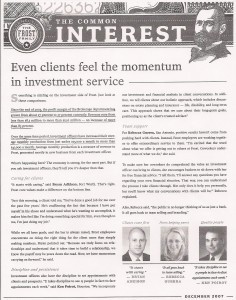 As a new manager, I led my department, Frost Investment Services, the brokerage division of Frost Bank, to four consecutive years of double-digit revenue growth, increasing revenue by over 83% (less than $8.5 million in revenue to more than $15.6 million), while increasing the profit margin from approximately 27% to approximately 37%.
As a new manager, I led my department, Frost Investment Services, the brokerage division of Frost Bank, to four consecutive years of double-digit revenue growth, increasing revenue by over 83% (less than $8.5 million in revenue to more than $15.6 million), while increasing the profit margin from approximately 27% to approximately 37%.
I say “approximately” because there was a discount brokerage portion of this division that did not report to me – the revenue growth stated is only including the production from our Financial Advisors/Investment Officers, but the overall profitability depended upon how we broke down total profitability of just the Financial Advisors without including discount brokerage. Depending on how we broke out discount brokerage’s numbers, this would change the profit margin slightly based upon how we calculated the profit margin +/- 1%.
In addition, during this same time period, the Financial Adivsors I coached raised their individual revenue production from less than $25,000 per month to over $41,000 a month.
A couple years into my new role as the Sales Manager/Senior Vice President for Frost Investment Services, the performance of our bank brokerage program was getting noticed from outside the organization. We were a member of the Bank Insurance Securities Association (BISA), and as such, we reported our numbers to this organization along with other bank brokerage programs.
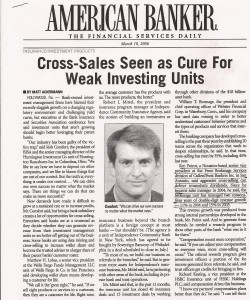 It was not long before I was being asked to speak and address groups of managers about our performance, explain what I was focusing on, as well as answer questions in a group setting to help other banks deliver similar performance.
It was not long before I was being asked to speak and address groups of managers about our performance, explain what I was focusing on, as well as answer questions in a group setting to help other banks deliver similar performance.
It just so happens an American Banker reporter was present during one of these meetings, caught my presentation, and wrote about it. At the time I had led my brokerage department to two consecutive years of double-digit revenue growth while other bank brokerage departments were struggling mainly with negative growth.
I also obtained double-digit revenue growth as a regional Sales Manager for Guaranty Bank (now part of BBVA, NYSE: BBVA) and JPMorgan Chase (NYSE: JPM).
Management and Understanding Personality Styles Training/Quiz
I can say there were many factors in orchestrating consistent double-digit revenue growth as a manager. Much of which I have put in Mentor Me. Goal setting by my Financial Advisors, like I walk through in Chapter I, Time Management – focusing on the “Big Rocks” (the most important tasks) and using a “High-Impact and Low-Impact Days” Strategy as I cover in Chapter II, Chapter VIII – where I focus on using constructive versus destructive criticism and putting it all together, as illustrated by various coaching/mentoring relationships I had with employees.
What I found was most important as a manager, is to remember what my three “Big Rocks” activities were – where my Time (T) and Energy (E) needed to be focused. Namely, on people, products, and partnerships. It is deliberate that people comes first in this list.
 People are always the most important piece of the puzzle for any manager. Developing, encouraging, lifting up, keeping, recruiting, and hiring the best people is the most important aspect of any management position. Without your people, your role as a manager does not exist – this was my constant attitude and thought process. My people were much more important than me.
People are always the most important piece of the puzzle for any manager. Developing, encouraging, lifting up, keeping, recruiting, and hiring the best people is the most important aspect of any management position. Without your people, your role as a manager does not exist – this was my constant attitude and thought process. My people were much more important than me.
Having said that, I always wanted to add value to my people, so I made sure if I took them out of production for training (sparingly is best), the time would be of most value to them – both personally and professionally.
For this reason, I found the training on “Understanding Personality Styles” in Chapter III of Mentor Me to be of most value to my people at different institutions, for the least amount of training time. As I say in Mentor Me, it was the “bang for the buck” training.
The Personality Styles Quiz and statistics I originally referenced and used for Mentor Me is no longer listed on the internet where I once found it – so I have made the original .pdf version available below (I had modified this version for use in Mentor Me):
As a manager, if you can lift people up and inspire them to accomplish things they never thought were possible – that is the true mark of a great manager.
This should be every manager’s goal – to inspire people and lift them up!
If you have not done so already…pick up your copy of Mentor Me today!
Click Below, Enter Your Information, and Buy Mentor Me:
Warmly,
Ken Poirot
Financial Professional and Scientist of Life
June 10, 2014
Mentor Me: GA=T+E—Oprah Winfrey
As I sat behind my desk staring at the weekly sales numbers, pouring over their meaning, I could feel the heat coming off the styrofoam cup in my right hand as I gently placed it on my lips…sipping, the steam pouring off and filling my nostrils with that sweet aroma of morning wanton wakefulness. My eyes never breaking their gaze from the sales numbers lit up in front of me on the computer screen.
Ring…the sound of the office phone on my left breaking the mesmerizing glow and grasp of the gleaming patterns of light and numbers commanding my gape. “Okay”, I thought…”gently put the cup down first…then pick up the phone”. It would not be the first time I had a momentary lapse of muscle coordination in the morning splashing a swig of coffee on my desk, nearly missing my computer keyboard.
Great…coffee down…pick up the phone with my right hand, pivot to the left in my chair to face the window and give the phone my full attention.
“Hey…thank you”, she said. A familiar friendly voice from Human Resources greeted me.
“What did I do right?”, I quipped,with a small chuckle as I leaned back in my chair.
“…for your new hire Investment Officer…you hired an African-American female”, she said with a semblance of glee that seemed to have some meaning behind it. As if this new hire had made her job somewhat all the easier.
I was a bit taken aback, as the phone call and the subject matter were completely unexpected. I replied, “…she was the best person for the job. She has incredible presentation skills – one of the best I have ever seen, if not the best, high energy, very positive, and a great track record of success.”
“Well…I just called to say thank you…have a great day…bye!”, she continued with the gleeful tone of her voice until the phone hung up and I sat there…receiver still in my hand staring out the window.
 My first thought…what just happened? Why was I being thanked specifically for hiring an African-American female for an officer position with the bank? Then I thought about those numbers I had seen floating around the bank once before in some management meeting…the “Diversity Program”. Now I realized why the regional Human Resources manager was so happy…with one hire she was not just checking off one box for African-American or female – she was checking off both boxes – both African-American AND female for her statistical, reporting tallies for upper level management.
My first thought…what just happened? Why was I being thanked specifically for hiring an African-American female for an officer position with the bank? Then I thought about those numbers I had seen floating around the bank once before in some management meeting…the “Diversity Program”. Now I realized why the regional Human Resources manager was so happy…with one hire she was not just checking off one box for African-American or female – she was checking off both boxes – both African-American AND female for her statistical, reporting tallies for upper level management.
The hire to me was a non-event. I had an open position for an Investment Officer/Financial Advisor – I interviewed candidates just as I had previously. It just so happens this time the best person for the job was an African-American female – doesn’t everyone fill positions like that? Hire the best person for the job?
I think the fact there are “Diversity Programs” in companies; the fact we have to keep statistics, as well as such government programs for banks, like “The Community Reinvestment Act” answers my question. The day we stop keeping statistics – the day we no longer think about “Diversity” in the workplace or scrutinize fair lending practices to make sure they are non-discriminatory in nature – is the day we can finally say there is equality in America. That day has not yet arrived.
As per a recent report I read with regard to the banking industry as a whole – you can see for yourself at this hyperlink: banking industry scorecard on “Diversity”.
Embarrassing and Excruciatingly Painful Moments of Youth
I sat and each time I moved I could hear the sound of that crinkly, waxy-like paper as it clung to my underwear and slipped on the vinyl, padded seat….the antiseptic, clinical smell permeating the air. “Nowz…relax zyour legz”, she said in a thick German accent, clutching a hammer-like mallet – the one with the red triangle on the end.
She struck me just below the knee and it felt a bit funny as my leg twitched involuntarily. “Nowz, zee ozherz one…okay…goot”, she said, looking over, smiling, nodding her head at my mother.
“Now standz up”, and as I stood those huge German hands yanked back the strap of my underwear in the front to take a peek. As the strap gently reformed its familiar shape she looked over at my mother and said, “zou have a healthzy boy”.
 Yes…the joys of being the only boy and having two older sisters – our family pediatrician was female. It is not that I did not like or respect Dr. Fuchs, but for a male child it is not the most comfortable feeling in the world having some large German woman yanking on your underwear and peeking at your manhood. Yes…the embarrassing moments of youth.
Yes…the joys of being the only boy and having two older sisters – our family pediatrician was female. It is not that I did not like or respect Dr. Fuchs, but for a male child it is not the most comfortable feeling in the world having some large German woman yanking on your underwear and peeking at your manhood. Yes…the embarrassing moments of youth.
What my mother would later share with me is the utmost respect she had for Dr. Fuchs and the almost awe she held for the fact Dr. Fuchs had become a doctor in the first place. As my mother explained to me, when she was growing up women had very few choices in the workplace beyond the roles of secretary or nurse. My mother – a strong and very intelligent women, had chosen to become a nurse – she is a RN. This was my first conscious memory with respect to the fact discrimination existed in our society here in America.
The resulting discussion left an impression on me – maybe it was the embarrassment of the moment just before or the excruciatingly painful thought of having my underwear tugged on by some large German woman with huge hands…but it left an impression.
The real excruciatingly painful aspect to that moment was realizing for the first time, my mother, who was my umbilical cord and conduit to all that was warm, loving, and caring in the world, never had true freedom of choice in the opportunities life presented to her when she was growing up. Her only culpability – strictly because she was born female.
Mentor Me Chapter I – Who Has Motivated, Inspired, and influenced YOu?
Oprah Winfrey. Who doesn’t admire Oprah Winfrey? From humble beginnings and with much adversity in her life, she has created a veritable empire. Yet, she kept her integrity along the way and made a conscious choice to give back to society with her philanthropy.
 That would be enough to admire someone, but to know she accomplished this at a time when it was especially difficult for women in the workplace and even more so for minority women speaks volumes about her character and her personal strength. Let’s face it – she had to be stronger, better, and more talented than her male counterparts in order to build this life for herself. I admire her strength, tenacity, courage, integrity, and character. In spite of all the obstacles and barriers for Oprah Winfrey – she broke threw them all, rose above them, and she achieved success.
That would be enough to admire someone, but to know she accomplished this at a time when it was especially difficult for women in the workplace and even more so for minority women speaks volumes about her character and her personal strength. Let’s face it – she had to be stronger, better, and more talented than her male counterparts in order to build this life for herself. I admire her strength, tenacity, courage, integrity, and character. In spite of all the obstacles and barriers for Oprah Winfrey – she broke threw them all, rose above them, and she achieved success.
As I wrote in Mentor Me:
“The other person I really admire is Oprah Winfrey. I cannot possibly tell her story any better than it is told here on the website biography.com, so I will quote:
‘American television host, actress, producer, and philanthropist Oprah Gail Winfrey was born on January 29, 1954, in Kosciusko, Mississippi. After a troubled adolescence in a small farming community, where she was sexually abused by a number of male relatives and friends of her mother, Vernita, she moved to Nashville to live with her father, Vernon, a barber and businessman. She entered Tennessee State University in 1971 and began working in radio and television broadcasting in Nashville.
In 1976, Oprah Winfrey moved to Baltimore, Maryland, where she hosted the TV chat show People Are Talking. The show became a hit and Winfrey stayed with it for eight years, after which she was recruited by a Chicago TV station to host her own morning show, A.M. Chicago. Her major competitor in the time slot was Phil Donahue. Within several months, Winfrey’s open, warmhearted personal style had won her 100,000 more viewers than Donahue and had taken her show from last place to first in the ratings. Her success led to nationwide fame and a role in Steven Spielberg’s 1985 film The Color Purple, for which she was nominated for an Academy Award for Best Supporting Actress.
Winfrey launched the Oprah Winfrey Show in 1986 as a nationally syndicated program. With its placement on 120 channels and an audience of 10 million people, the show grossed $125 million by the end of its first year, of which Winfrey received $30 million. She soon gained ownership of the program from ABC, drawing it under the control of her new production company, Harpo Productions (“Oprah” spelled backward), and making more and more money from syndication.
In 1994, with talk shows becoming increasingly trashy and exploitative, Winfrey pledged to keep her show free of tabloid topics. Although ratings initially fell, she earned the respect of her viewers and was soon rewarded with an upsurge in popularity.
Needless to say, through all of her adversity in life, she found the strength to make her tomorrow better and to succeed. Furthermore, she gives back to society with her philanthropy and has driven herself to never rest on her laurels, becoming more and more successful, now even having a television network, OWN.’”
So in light of my experiences in the workplace, and my childhood impressions, maybe now you have a better understanding of why Oprah Winfrey is one of the two people I most admire.
If you have not done so already…pick up your copy of Mentor Me today!
Click Below, Enter Your Information, and Buy Mentor Me:
Warmly,
Ken Poirot
Financial Professional and Scientist of Life
Mentor Me: GA=T+E—The Psychology of Achievement
As a financial advisor, sales manager, coach, and trainer, I have been exposed to a great deal of training classes, public speakers, corporate retreats, exercises, personality tests, – you name it. Most of which I would say was not nearly so beneficial and a huge waste of employee/corporate time and money. In contrast – I found this one amazing program on my own.
I worked through the CD series, then found it so beneficial I bought the series in bulk and distributed it to my financial advisors, as well as upper level management with my company – Brian Tracy’s, The Psychology of Achievement.
It is by far the best program I have found of its kind – it inspired me in my career and personal life, and I have seen this program transform the lives of the people I have worked with and their families.
First a Little Background On Brian Tracy – For Those of You New to Him
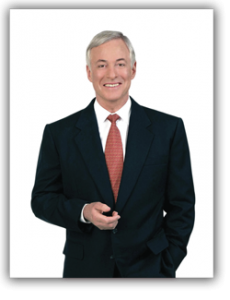 Here is a great hyperlink to the story of Brian Tracy’s life. As per this article, “His own life is a testament to his no-frills, no-excuses, no-nonsense philosophy of success. From a trouble-making kid from a poor family to a wandering, struggling laborer, he made a dramatic shift in beliefs and attitude that propelled him to rise to a top sales position and beyond.
Here is a great hyperlink to the story of Brian Tracy’s life. As per this article, “His own life is a testament to his no-frills, no-excuses, no-nonsense philosophy of success. From a trouble-making kid from a poor family to a wandering, struggling laborer, he made a dramatic shift in beliefs and attitude that propelled him to rise to a top sales position and beyond.
After mastering sales, he went on to successful careers in a variety of fields and industries, eventually attaining the rank of chief operating officer of a $265 million development company. Over the last 30 years, he’s worked to distill his vast life experience into a foolproof system for success. His goal today, as head of Brian Tracy International and Brian Tracy University, is to pass on to others everything he has learned from a lifetime of study, trial, error, passion and old-fashioned hard work.
Fascinated by Success
Tracy was born in Vancouver, British Columbia, in 1944, one of four brothers in a poor family. His father didn’t always have work, and he never had work that paid well. Brian and his brothers got their clothing from charities, and while his parents were upstanding people with good values, they worried to no end about money. From the time he could remember, young Brian was deeply curious about why other families were enjoying a higher quality of life without being plagued by money worries.
In the first chapter of his book Maximum Achievement, Tracy writes about how his parents always seemed to be telling themselves the same thing, over and over again, like a mantra: ‘We can’t afford it, we can’t afford it, we can’t afford it.’ He frequently reminds his audiences that people become what they think about most of the time. Studies of self-made millionaires have revealed they think about financial independence more than anything else. Like many people who lived through the Depression, Tracy’s parents thought about the opposite—poverty—most of the time.
 Tracy didn’t put all of this together overnight, though. Before he could become an expert on success, he had to experience plenty of his own failure and dejection in childhood, adolescence and into adulthood. By his own description, he was ‘a behavior problem’ as a kid, earning countless detentions at school and even getting suspended and expelled multiple times.
Tracy didn’t put all of this together overnight, though. Before he could become an expert on success, he had to experience plenty of his own failure and dejection in childhood, adolescence and into adulthood. By his own description, he was ‘a behavior problem’ as a kid, earning countless detentions at school and even getting suspended and expelled multiple times.
Eventually he flunked out of high school and started working as a dishwasher. This began a pattern of drifting from one low-paying job to another, barely making ends meet, and sometimes not at all. In the back of Tracy’s mind, he constantly puzzled over the question he had asked himself since childhood: Why do some people fail while others succeed?
Embracing Accountability
After years of wandering, vaguely assuming his life was the result of external forces over which he had no influence, Tracy woke up. He realized that if his life was ever to be any different, he was the only one who could do anything about it. If he wanted answers, he would have to actively seek them out. ‘The turning point for me came when I was working as a construction laborer, and it was realizing that I was responsible for my own life,’ he says.
 Shortly after that, Tracy got his first job in sales, and after a rough start, he began to apply his curiosity about success and failure to his floundering selling strategies. He read everything he could about sales, and he quizzed successful salespeople about what they were doing so he could emulate their practices. He set the goal of becoming a better salesman and then pursued it wholeheartedly by seeking out knowledge and trying out different approaches. He quickly climbed the ranks to become the No.1 sales manager at his company.
Shortly after that, Tracy got his first job in sales, and after a rough start, he began to apply his curiosity about success and failure to his floundering selling strategies. He read everything he could about sales, and he quizzed successful salespeople about what they were doing so he could emulate their practices. He set the goal of becoming a better salesman and then pursued it wholeheartedly by seeking out knowledge and trying out different approaches. He quickly climbed the ranks to become the No.1 sales manager at his company.
In the following years, Tracy capitalized on multiple business opportunities, taking on more responsibility and setting increasingly loftier goals for himself. He accepted challenges in sales, management, real estate development, business theory and marketing.In every instance, his innate curiosity served him well as he read prodigiously and became an expert on the subjects and industries he studied.
If you suggest this type of dedicated learning to the average person, chances are, the reply will be something like, ‘But I don’t have time for that.’ As usual, Tracy has a rebuttal: ‘Never let your car be moving without you learning something.’ He’s referring to the fact that most everyone drives and every book or seminar imaginable is available on audio. ‘Read, listen, continuously learn and grow. I read for three hours a day for 50 years, somewhere between 6,000 and 7,000 books. You can learn anything if you really want to.’
A Student of Achievement
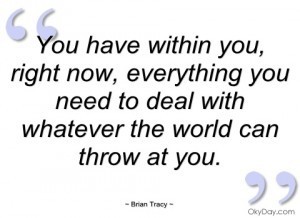 Tracy’s voracious reading wasn’t limited to his professional interests. He read about world history, economics, psychology, personality, marriage and parenting so he could have a better understanding of the world and his place in it. He also read the best writings on success: ‘Starting when I was 23 or 24, I read all the classics, Napoleon Hill, Claude
Tracy’s voracious reading wasn’t limited to his professional interests. He read about world history, economics, psychology, personality, marriage and parenting so he could have a better understanding of the world and his place in it. He also read the best writings on success: ‘Starting when I was 23 or 24, I read all the classics, Napoleon Hill, Claude
Bristol, Orison Swett Marden. I laid a foundation for myself in success literature.’
Over the last three decades, Tracy has earned a place among the aforementioned greats. In 1981, he decided to start compiling everything he had learned into a comprehensive system for achieving success and happiness. ‘I went to some seminars that were really quite poor, full of fluff,’ he says. ‘I thought, ‘I can do better than this.’
The first program he offered was entitled The Inner Game of Success, a two-day seminar that went through various incarnations as Tracy developed his message. For a time, it was called the Phoenix Seminar, which later became an audio best-seller entitled The Psychology of Achievement.”
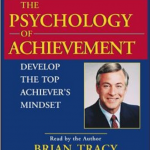 In Mentor Me, I write about how this program specifically changed the life of one of the employees I coached (the CD series greatly helped all my financial advisors) – both professionally and personally, as he shared this program with his son who had some troubles, and his wife who was deteriorating from a debilitating disease. I also write about my personal brush with this amazing and humble man when I booked him for one of our semi-annual sales meetings as our key speaker/facilitator for two days.
In Mentor Me, I write about how this program specifically changed the life of one of the employees I coached (the CD series greatly helped all my financial advisors) – both professionally and personally, as he shared this program with his son who had some troubles, and his wife who was deteriorating from a debilitating disease. I also write about my personal brush with this amazing and humble man when I booked him for one of our semi-annual sales meetings as our key speaker/facilitator for two days.
If you do not have a copy of The Psychology of Achievement, click on the banner below, go to Brian Tracy’s website, and buy a copy. You will thank me, as all those I have introduced to this program have benefited greatly from it, as well as I have greatly benefited from this program in my life.
If you have not done so already…pick up your copy of Mentor Me today!
Click Below, Enter Your Information, and Buy Mentor Me:
Warmly,
Ken Poirot
Financial Professional and Scientist of Life



